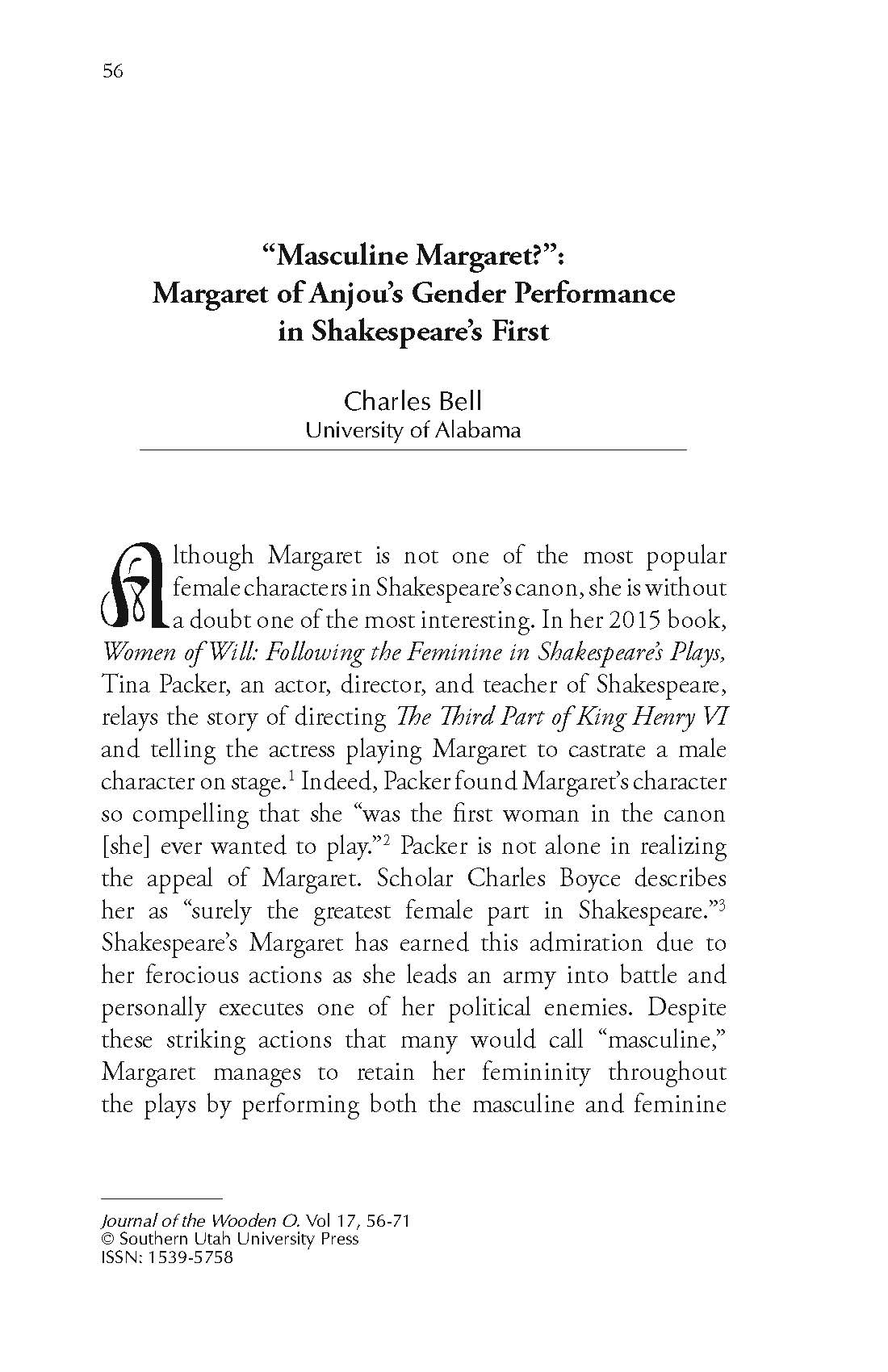“Masculine Margaret?”: Margaret of Anjou’s Gender Performance in Shakespeare’s First
Main Article Content
Abstract
Although Margaret is not one of the most popular female characters in Shakespeare’s canon, she is without a doubt one of the most interesting. In her 2015 book, Women of Will: Following the Feminine in Shakespeare’s Plays, Tina Packer, an actor, director, and teacher of Shakespeare, relays the story of directing The Third Part of King Henry VI and telling the actress playing Margaret to castrate a male
character on stage.1 Indeed, Packer found Margaret’s character so compelling that she “was the first woman in the canon [she] ever wanted to play.”2 Packer is not alone in realizing the appeal of Margaret. Scholar Charles Boyce describes her as “surely the greatest female part in Shakespeare.”3 Shakespeare’s Margaret has earned this admiration due to her ferocious actions as she leads an army into battle and personally executes one of her political enemies. Despite these striking actions that many would call “masculine,” Margaret manages to retain her femininity throughout the plays by performing both the masculine and feminine genders depending on which would benefit her most at the time.
